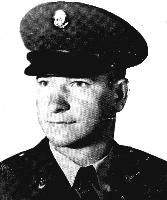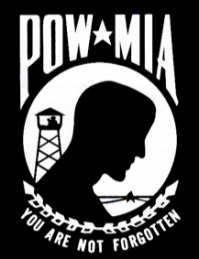
Donald Lee Sparks
Rank/Branch:
Sergeant First Class/US Army
Unit:
1st Platoon, Company C,
3rd Battalion, 21st Infantry,
23rd Infantry Division (Americal)
Rank/Branch:
Sergeant First Class/US Army
Unit:
1st Platoon, Company C,
3rd Battalion, 21st Infantry,
23rd Infantry Division (Americal)

Date of Birth:
07 November 1946
Home of Record:
Carroll, IA
Date of Loss:
17 June 1969
Country of Loss:
South Vietnam
Loss Coordinates:
153416N 1081737E (BT098232)
Click coordinates to view maps
Status in 1973:
Prisoner Of War
Category:
1
Aircraft/Vehicle/Ground:
Ground
Other Personnel in Incident:
Larry Alonza Graham (killed, body recovered)
07 November 1946
Home of Record:
Carroll, IA
Date of Loss:
17 June 1969
Country of Loss:
South Vietnam
Loss Coordinates:
153416N 1081737E (BT098232)
Click coordinates to view maps
Status in 1973:
Prisoner Of War
Category:
1
Aircraft/Vehicle/Ground:
Ground
Other Personnel in Incident:
Larry Alonza Graham (killed, body recovered)
REMARKS: LETTERS FOUND; DIED IN PW CAMP
SYNOPSIS: On 17 June 1969, then PFC Donald L. Sparks and Cpl. Larry A. Graham were serving as pointmen for their company while on a combat patrol near Chu Lai, Tien Phuoc District, Quang Tin Province, South Vietnam. At 0830 hours an enemy force of unknown size ambushed their unit. Witnesses indicated that during the ensuing fire fight both men were wounded and fell to the ground.
No one was able to reach the area where the pointmen lay for almost twelve hours because of heavy enemy fire. However, several members of the platoon believed both men to be dead. As the remaining members of the patrol withdrew under fire, they observed NVA soldiers stripping PFC Sparks' of his clothing and weapon.
Air strikes were requested - including napalm, 500 and 1000 pound bombs - and dropped on enemy positions in and around the ambush site. Later the same day, another search and rescue/recovery (SAR) attempt was made to reach the bodies. Again the enemy repulsed their efforts.
On the morning of 18 June, a recovery team was able to reach the site. The remains of Cpl. Graham were recovered during this search; but no remains for PFC Sparks could be found. The remainder of the day was spent in digging in the vicinity of a bomb crater where witnesses had last seen Donald Sparks. After the conclusion of this operation, the US Army believed his body probably had been totally destroyed by the air strikes. With no positive evidence of death, PFC Sparks was initially listed as Missing in Action.
On 3 February 1971, a Viet Cong rallier reported to US intelligence that during April 1969, an American POW suffering from gunshot wounds, as well as wounds from a US air strike, had been held in a POW camp located near the Song Khan River. This camp is also in the vicinity of the ambush. The American's wounds were dressed and he was transported in a northwesterly direction along the southern bank of the Song Khan River.
After Operation Homecoming, three returned POWs, including Maj. Harold Kushner, provided a second-hand report about the fate of PFC Sparks. They reported that in the spring of 1970, while en route to a new detention camp in the same province in which Donald Sparks was lost in, their Vietnamese interpreter/guard said that a US POW by the name of "Don" was scheduled to join their POW group. He added that that POW had been moving more slowly because of foot wounds. "Don" never joined the other Americans.
On 17 May 1970, a Viet Cong soldier was killed in fighting near Chu Lai. American soldiers from the 19th Infantry Division found two letters from Donald Sparks dated April 11, 1970 on his body. In one of the letters addressed to his parents, he assured them that he was in good health in spite of the fact that he had not seen another American during his ten months of captivity. He also mentioned in one of the letters having received a wound to his foot. A report from the 8th Military Personnel Group crime lab conclusively proved that the letters were written by PFC Sparks. Six months later, Sparks' official status was changed to Prisoner Of War.
On 19 September 1973, an ARVN returnee stated that a US POW entered a POW camp in February 1970 using a stick for support as his feet and legs were bruised. Allegedly, the POW later contracted beriberi and is reported to have died in June 1971. Even though the rallier later recanted this report of death, the US government conveniently correlated it as fact to Donald Sparks.
SYNOPSIS: On 17 June 1969, then PFC Donald L. Sparks and Cpl. Larry A. Graham were serving as pointmen for their company while on a combat patrol near Chu Lai, Tien Phuoc District, Quang Tin Province, South Vietnam. At 0830 hours an enemy force of unknown size ambushed their unit. Witnesses indicated that during the ensuing fire fight both men were wounded and fell to the ground.
No one was able to reach the area where the pointmen lay for almost twelve hours because of heavy enemy fire. However, several members of the platoon believed both men to be dead. As the remaining members of the patrol withdrew under fire, they observed NVA soldiers stripping PFC Sparks' of his clothing and weapon.
Air strikes were requested - including napalm, 500 and 1000 pound bombs - and dropped on enemy positions in and around the ambush site. Later the same day, another search and rescue/recovery (SAR) attempt was made to reach the bodies. Again the enemy repulsed their efforts.
On the morning of 18 June, a recovery team was able to reach the site. The remains of Cpl. Graham were recovered during this search; but no remains for PFC Sparks could be found. The remainder of the day was spent in digging in the vicinity of a bomb crater where witnesses had last seen Donald Sparks. After the conclusion of this operation, the US Army believed his body probably had been totally destroyed by the air strikes. With no positive evidence of death, PFC Sparks was initially listed as Missing in Action.
On 3 February 1971, a Viet Cong rallier reported to US intelligence that during April 1969, an American POW suffering from gunshot wounds, as well as wounds from a US air strike, had been held in a POW camp located near the Song Khan River. This camp is also in the vicinity of the ambush. The American's wounds were dressed and he was transported in a northwesterly direction along the southern bank of the Song Khan River.
After Operation Homecoming, three returned POWs, including Maj. Harold Kushner, provided a second-hand report about the fate of PFC Sparks. They reported that in the spring of 1970, while en route to a new detention camp in the same province in which Donald Sparks was lost in, their Vietnamese interpreter/guard said that a US POW by the name of "Don" was scheduled to join their POW group. He added that that POW had been moving more slowly because of foot wounds. "Don" never joined the other Americans.
On 17 May 1970, a Viet Cong soldier was killed in fighting near Chu Lai. American soldiers from the 19th Infantry Division found two letters from Donald Sparks dated April 11, 1970 on his body. In one of the letters addressed to his parents, he assured them that he was in good health in spite of the fact that he had not seen another American during his ten months of captivity. He also mentioned in one of the letters having received a wound to his foot. A report from the 8th Military Personnel Group crime lab conclusively proved that the letters were written by PFC Sparks. Six months later, Sparks' official status was changed to Prisoner Of War.
On 19 September 1973, an ARVN returnee stated that a US POW entered a POW camp in February 1970 using a stick for support as his feet and legs were bruised. Allegedly, the POW later contracted beriberi and is reported to have died in June 1971. Even though the rallier later recanted this report of death, the US government conveniently correlated it as fact to Donald Sparks.

